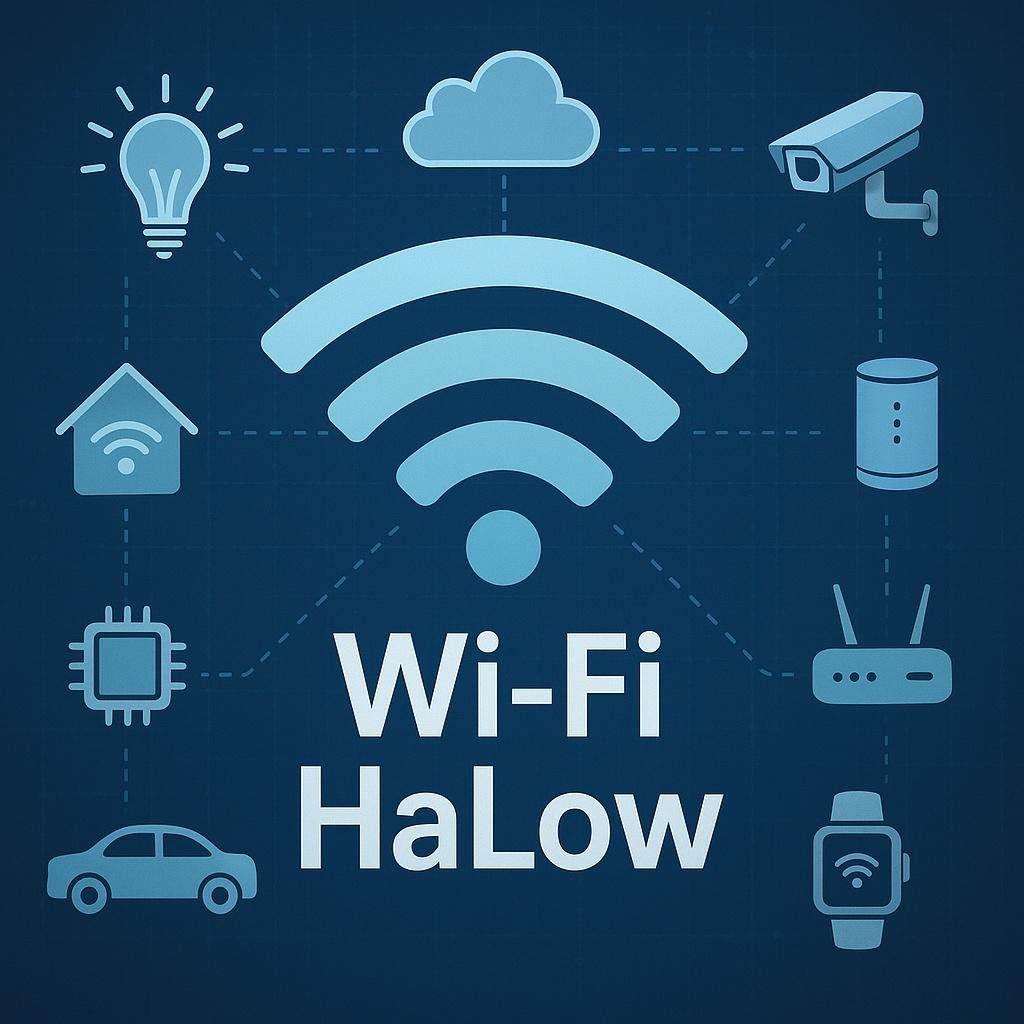Introduction
Internet of things projects have long wrestled with a simple question: how do you connect small, battery-powered devices reliably, at distance, and at scale, without making the hardware bulky or the bill of materials painful. Australian startup Morse Micro believes the answer is Wi-Fi HaLow: a standard built on IEEE 802.11ah that operates in spectrum below 1 gigahertz. The company has closed a Series C round of 59 million dollars and announced mass production of its silicon: complete system-on-chip parts, modules, and evaluation kits.
The goal is to take Wi-Fi into places it has traditionally struggled to reach and to do so with the predictability that IoT deployments demand. This article explains what Wi-Fi HaLow is, why sub-gigahertz operation matters, where it fits among other low-power wireless options, and how Morse Micro’s move to full production could change the economics and reliability of real-world projects. You will also find practical guidance on when to choose HaLow, what to expect during pilots, and the limitations to plan for before you commit.
What Wi-Fi HaLow Really Is
Wi-Fi HaLow is the designation for certified products that implement IEEE 802.11ah. Unlike conventional Wi-Fi that lives in 2.4 and 5 gigahertz bands, HaLow operates below 1 gigahertz. That single design decision shapes everything that follows. Lower frequencies propagate farther, bend around obstacles more gracefully, and penetrate walls with less signal loss compared with higher-frequency bands. The upshot is a more robust link budget and a meaningful range boost for devices that cannot host large antennas or power-hungry radios.
HaLow is still Wi-Fi at its core. That means native IP connectivity, familiar security models, and well-understood provisioning flows. Sensors, wearables, access points, and gateways speak in a language the broader network already understands. For engineering teams, that compatibility shortens integration time and reduces the number of protocol translators or application-layer gateways you need to deploy and maintain.
Why Sub-Gigahertz Changes The Equation
The big advantage of sub-gigahertz is not only headline range. It is the way links behave in messy, human environments. Think of a hospital with reinforced walls, a distribution center packed with metal racks, or a multi-storey apartment building with concrete cores. Signals at lower frequencies lose less energy when they pass through those materials. That translates into a cleaner link at the same transmit power, or similar performance at lower power draw. For battery-operated devices, shaving milliamps from the radio budget often unlocks months of extra life, fewer maintenance visits, and a stronger business case for large fleets.
Another factor is network density. IoT projects rarely stop at a dozen devices. They scale to hundreds or thousands within a campus or a city block. Sub-gigahertz channels, combined with Wi-Fi scheduling techniques, can support many clients while keeping contention manageable. The practical result is fewer mysterious dropouts and a network that feels engineered rather than improvised.
What Morse Micro Is Bringing To Market
With the Series C funding secured, Morse Micro has moved from sampling to mass production across three fronts: a silicon platform in system-on-chip form, ready-to-integrate radio modules, and developer-friendly evaluation kits. The system-on-chip route appeals to device makers who want tight control over size, power, and cost. The modules make sense when speed to market is critical or when certification complexity needs to be contained. Evaluation kits give hardware and firmware teams a quick way to test links, measure power in realistic duty cycles, and prototype applications before committing to an industrial design.
The company’s positioning is straightforward. Deliver a HaLow platform that is small, power-efficient, and standards-compliant, wrap it with solid software and documentation, and support it with the production capacity that large customers require. The fresh capital provides room to scale manufacturing, deepen reference designs, and expand the support footprint for customers building at volume.
Where Wi-Fi HaLow Fits Best
The sweet spot for HaLow is any scenario that blends distance, obstacles, and tight power budgets. In smart buildings, it can connect battery sensors across floors without choked gateways in every corridor. In industrial automation, it gives asset tags and condition-monitoring nodes a stable path through cluttered facilities. In agriculture, it can link field sensors, pumps, and gates across wide plots where pulling cable makes little sense. In retail, it helps electronic shelf labels and environmental probes stay online during peak hours when interference in traditional bands climbs. In healthcare, it offers a route for wearables and patient monitors that need to roam beyond a single ward.
Each of these use cases benefits from two HaLow traits. The first is predictable coverage. The second is seamless IP integration. When devices are addressable as first-class network citizens, cloud connectivity and on-premises analytics frameworks do not need protocol acrobatics. That reduces points of failure and makes troubleshooting easier for operations teams.
How HaLow Compares With Other Low-Power Options
Choosing a wireless standard is always a tradeoff. Rather than chasing a universal winner, it helps to map the axes that matter to your project: range, throughput, power, cost, interference resilience, and ecosystem maturity. Compared with classic Wi-Fi in 2.4 or 5 gigahertz, HaLow sacrifices headline throughput to gain link robustness and range. That is a rational swap for devices that move tiny payloads on predictable schedules.
Against Bluetooth Low Energy, HaLow reaches farther and handles infrastructure-style networks with less bridging, while BLE remains excellent for very short-range peripherals and personal area networks. Versus Zigbee or Thread, HaLow avoids multi-hop mesh complexity by leaning on longer single-hop links, which many operators find easier to design and maintain at scale. When you look at wide-area options such as LoRaWAN or cellular IoT variants, HaLow sits in a different place.
It is well suited to private local networks where you control the access points and want native IP, while LoRaWAN and cellular shine when you need city-wide reach or managed carrier services. The takeaway is simple. If your application needs meters-to-hundreds-of-meters coverage through walls, modest data rates, long battery life, and first-class IP compatibility, HaLow deserves a seat at the table.
Security, Certification, and Operations
Security in IoT is a system property, not a checkbox. HaLow’s biggest advantage here is inheritance. Because it is Wi-Fi by design, it aligns with widely adopted authentication and encryption practices and fits into existing governance frameworks. That makes it easier to satisfy internal audits and align device onboarding with your identity and access management strategy.
Certification matters as soon as you move beyond pilots. Wi-Fi Certified HaLow gives buyers and integrators a baseline assurance that devices meet the standard and play well in multi-vendor environments. For product companies, using a pre-certified module can compress timelines and reduce regulatory friction. For operators, insisting on certification helps keep multi-year maintenance predictable.
On the operations side, you still need good radio hygiene. Site surveys, antenna placement, channel planning, and interference monitoring do not disappear because the frequency changed. The difference is that sub-gigahertz propagation gives you more margin for error, which is welcome in dynamic environments where floor plans and inventory shift.
What The New Funding Unlocks
Money alone does not guarantee adoption, but it does buy time and capacity to solve the unglamorous problems that block rollouts. Expect three direct impacts from Morse Micro’s raise. First, volume manufacturing that keeps pace with customer forecasts, which is crucial when a pilot turns into a regional deployment. Second, richer development tools, from reference firmware to power-profiling utilities, that shorten engineering cycles.
Third, ecosystem building: partnerships with access point vendors, module makers, contract manufacturers, and solution integrators that make it easier for customers to assemble complete systems with fewer surprises. The presence of evaluation kits alongside production silicon is telling. It signals a focus on hands-on adoption. Teams can measure idle currents, wake-up times, and real-world throughput in their own environments rather than trusting lab numbers that do not match the field.
Practical Guidance For Teams Evaluating HaLow
Start with a coverage hypothesis. Identify the hardest parts of your environment: thick walls, basements, long aisles, or outdoor spans. Place a small number of HaLow access points and test at the edges first. Measure packet success under typical interference conditions, not just on a quiet afternoon. Pay close attention to antenna options. Sub-gigahertz wavelengths are longer, which affects antenna size and placement inside compact devices. An early mechanical model that respects antenna keep-outs will save you painful rework later.
Profile power honestly. Use duty cycles that reflect production behavior rather than optimistic lab scripts. Include the cost of retries and roaming in your budget. Integrate security early so onboarding flows and certificate handling do not derail late in the project. Finally, treat firmware updates as a first-class requirement. Any IoT device that cannot be updated safely and reliably will become a maintenance liability.
Constraints You Should Plan Around
No technology is perfect. Throughput on HaLow is intentionally modest compared with mainstream Wi-Fi. If your device needs to stream rich media or push large firmware images frequently, you may outgrow the link budget quickly. Regional regulations vary for sub-gigahertz operation, which can affect channel widths and transmit power. That means performance observed in one country may not map directly to another.
Antenna design deserves early engineering attention because enclosure materials and layout choices can erode the theoretical benefits of the band. Lastly, while the ecosystem is now maturing, it is younger than the decades-old 2.4 and 5 gigahertz Wi-Fi markets, so your shortlist of compatible infrastructure may be narrower than you expect. None of these are showstoppers, but they are better addressed up front than after a pilot succeeds and procurement scales up.
What Mass Production Means For The Market
Announcing mass production is more than a milestone. It is a signal to device makers, solution providers, and buyers that supply risk is dropping and that a support network exists for real deployments. For startups considering HaLow inside smart meters, trackers, or safety sensors, the availability of both SoCs and modules lowers barriers in two directions at once. If you have RF talent in-house, the SoC path lets you optimize aggressively for cost and power.
If you need speed and regulatory simplicity, modules let you ship sooner and focus your effort where it differentiates the product. For end customers, the most important change is optionality. A credible HaLow supply chain gives you leverage in procurement and the confidence to standardize across sites rather than treating each factory, store, or hospital as a bespoke network puzzle.
The Bigger Picture For IoT
The IoT world has spent years learning that reliability and battery life beat flashy demos. Success comes from predictable links, simple onboarding, and long service intervals. Wi-Fi HaLow aligns neatly with that reality. It does not chase speed records. It focuses on robust, low-power connectivity that behaves well in ordinary buildings and outdoor spaces. Morse Micro’s funding and production ramp are noteworthy because they move HaLow from promise to product.
That shift tends to attract integrators who have been waiting for supply assurance and certification comfort before committing to a new radio in their roadmaps. If the momentum holds, expect to see HaLow show up quietly in building sensors, badges, asset trackers, and consumer devices that benefit from longer range without abandoning the familiar Wi-Fi toolset that IT teams already understand.
Conclusion
Morse Micro’s Series C raise of 59 million dollars and the move to mass-produce Wi-Fi HaLow silicon, modules, and evaluation kits are timely for an industry that needs dependable, low-power links more than it needs another headline speed figure. By operating below 1 gigahertz, Wi-Fi HaLow offers longer reach and better wall penetration while keeping the operational simplicity of standard Wi-Fi and native IP.
It will not replace every wireless choice, and teams must plan around realistic throughput, regional rules, and careful antenna design. Yet for the broad class of sensor networks, wearables, trackers, and smart-building applications where battery life and reliability define success, HaLow is a strong fit.
The practical message is clear. If your IoT roadmap includes hard-to-reach spaces, constrained devices, and a need to scale without constant hand-holding, Wi-Fi HaLow deserves serious evaluation. With fresh capital and production-ready platforms, Morse Micro is positioned to help more teams turn that evaluation into working, maintainable systems that deliver value for years.






